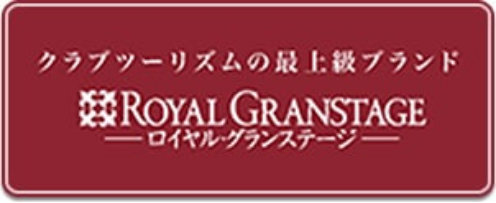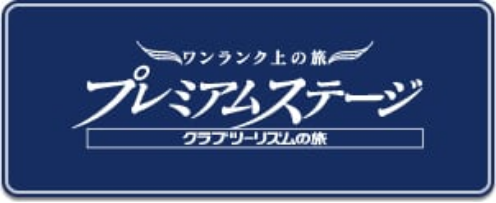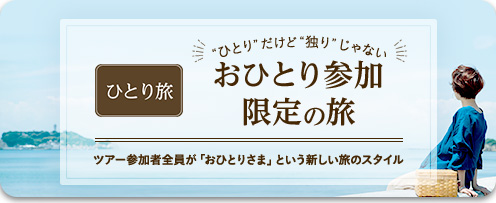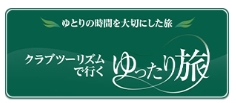Japan Power Spot Tour/Travel


"Power spots" are a hot topic these days. Just visiting historic places such as shrines, temples and sacred mountains gives you a sense of solemnity. Why not try visiting power spots all over Japan on a Club Tourism tour?
Tokai, Hokuriku and Kansai area
Mount Fuji [Shizuoka Prefecture and Yamanashi Prefecture]
A world-renowned mythical sacred mountain...to the highest mountain in Japan!

(Image)
Mount Fuji is an active volcano that straddles Shizuoka and Yamanashi prefectures, with an elevation of 3,776 meters. It is the highest mountain in Japan, and is also one of the Three Most Famous Mountains in Japan (the Three Holy Mountains), one of the 100 Most Famous Mountains in Japan, and one of the 100 Most Geologically Beautiful Mountains in Japan. It has also been designated as a Special Place of Scenic Beauty in Japan, and is known to all Japanese people as the "number one mountain in Japan" in both name and reality.
Its beauty and majesty are widely known as a symbol of Japan not only at home but also overseas, and in the spiritual world Mount Fuji is famous as a place where the "power of the gods" gathers.
It is said that various powers converge on Mount Fuji, and the power that emanates from the mountain itself is strong, exerting a strong influence not only on the mountains and hiking trails, but also on the wide areas overlooking Mount Fuji, such as the foothills, the Fuji Five Lakes, and the surrounding hot spring resorts.
The reason why just looking at Mount Fuji makes our hearts feel excited is probably because we unconsciously sense its immense power.
The climbing season is only from July to Aug.. There are four trailheads and buses that run to the fifth station.
If you're thinking about trying to climb Mt. Fuji next season, start working on building up your stamina on a daily basis.
Club Tourism is also preparing many tours for those taking on the challenge of climbing Mt. Fuji. We look forward to receiving your applications for next season!
Other unique way to enjoy the ride is to receive the power of Mt. Fuji from the train window!
The Fujikyu Railway, which runs from Otsuki in Yamanashi Prefecture to Lake Kawaguchi, allows you to view the majestic Mount Fuji from inside the train.
Let's head to the highest mountain in Japan! We recommend taking a leisurely trip on a local train.
Search tours by place of departure
*Only displayed if there is a tour
Let's go see Mt. Fuji! Check out the tour special here
Ise Shrine [Mie Prefecture]
The entire grounds of Oise-san, the head shrine of Japan, are a powerful power spot

(Image)
Ise Shrine is located in Ise City, Mie Prefecture, and is the head shrine of the thousands of shrines throughout Japan. Its official name is Jingu. It is called "Ise Shrine" to distinguish it from other shrines.
This shrine was considered to be in a special category even under the "Modern Shrine Ranking System" which ranked shrines and was in place from the Meiji period until before the war, and it is said to have existed beyond any ranking system in Japan.
There are two Ise Grand Shrines: Kotaijingu, which enshrines Amaterasu Omikami, the deified sun, and Toyouke Daijingu, which enshrines Toyouke no Omikami, the guardian deity of food, clothing, and shelter. These are called Naiku and Geku, respectively.
As the Naiku and Geku are located far apart, many people only visit the Naiku, which is home to tourist spots such as Okage Yokocho. However, the correct way to visit is to first visit the Geku, and then the Naiku.
Ise Shrine, which has been treasured and revered by the Imperial Court and the Imperial family since ancient times, has strong power spots throughout the grounds of both the Outer Shrine and the Inner Shrine.
Ise Grand Shrine has a dignified atmosphere that makes you stand up straight, yet it is also known as the "hometown of the Japanese heart," and you can feel a sense of security that embraces everything. Why not go on a pilgrimage to Ise Shrine, which is a place you should visit at least once?
Search tours by place of departure
*Only displayed if there is a tour
Click here for Ise Shrine tour special
Kumano Kodo and Nachi Falls (Wakayama Prefecture)
A path of faith that has continued since ancient times
Head to the "Kami no Taki" waterfall, a spectacular sight that falls from the sky...

(Image)
Kumano Kodo is a pilgrimage route to Kumano Sanzan shrines (Kumano Hongu Taisha, Kumano Hayatama Taisha, and Kumano Nachi Taisha). Located in the south of the Kii Peninsula, it has been walked by many travelers for about 1,000 years.
In 2004, the "Sacred Sites and Pilgrimage Routes in the Kii Mountain Range" was registered as a World Heritage Site, and this road's popularity and value became known to many people, and it has long been considered a "special place where gods reside." This land has accepted all sorts of different religions, including Shinto, Buddhism, Shugendo, and Esoteric Shingon Buddhism, and even today it exudes a tense, solemn atmosphere.
Nachi Falls is the tallest straight waterfall in Japan with a drop of 133m and is counted among the three most famous waterfalls in Japan along with Kegon Falls and Fukuroda Falls.
Kumano Nachi Taisha Shrine, which many people visit as a powerful power spot, is a shrine that arose from nature worship, with Nachi Falls itself regarded as a god.
Just standing in front of it will overwhelm you with the splashes of the water and the roaring sound, and you will feel a surge of power throughout your entire body.
Search tours by place of departure
*Only displayed if there is a tour
Kifune Shrine [Kyoto Prefecture]
Famous for matchmaking
The head shrine of Kifune Shrine across the country

(Image)
Kifune Shrine is a shrine located in Sakyo Ward, Kyoto City, Kyoto Prefecture, and is the head shrine of the approximately 450 Kifune Shrine across the country.
The shrine is dedicated to the gods of water and matchmaking, and is a popular destination visited by many tourists from all over the country.
It is especially famous as a shrine for matchmaking, and the Heian period poet Izumi Shikibu, who had many romantic relationships, visited Kifune Shrine in an attempt to win back the heart of her estranged husband. It is said that she successfully reconciled with her husband and their marriage became happy.
Kifune Shrine is also famous for its "mizuuranaikuji," or water fortune-telling slips. If you choose a blank piece of paper and float it in the shrine's sacred water, the letters will appear.
When there are a lot of tourists, it is common to see a long line in front of the holy water.
Speaking of sightseeing around Kifune Shrine, the "Kibune Kawadoko" is a popular spot where you can enjoy meals on a platform above Kibune in the summer.
Search tours by place of departure
*Only displayed if there is a tour
Click here for Kyoto tour specials
Noto Peninsula (Ishikawa Prefecture)
The entire peninsula is a power spot, tossed about by the rough waves of the Sea of Japan
"Even the soil of Noto is gentle."

(Image)
Almost the entire Noto Peninsula belongs to Ishikawa Prefecture, and at one point it turns east to form Toyama Bay.
It is a peninsula that juts out north from the center of the Hokuriku region into the Sea of Japan, and a wide area of it is designated as the Noto Peninsula Quasi-National Park.
The coast facing Toyama Bay is called Uchiura, and the coast facing the Sea of Japan is called Sotoura. From the tip of the peninsula to the base, the areas are called Oku-Noto, Naka-Noto, and Kuchi-Noto, respectively.
There are many powerful power spots on the Noto Peninsula, and one of them, Cape Suzu, also known as the "sacred cape," is a rare ultra-power spot even in Japan.
Known as the "holy land at the end of the world," this is a historic power spot that appeared in the ancient Izumo myth, the "Land Pulling Myth."
This is a place where the "power of nature" is concentrated, where the "air currents of the earth" that gather at the cape in a global cycle, and the ocean currents from the south (Tsushima Warm Current) and the ocean currents from the north (Liman Cold Current) gather and intersect in waves, making this a unique geography even on a global scale.
As the saying goes, "Noto is gentle, even the soil is gentle," so why not visit the Noto Peninsula, where not only the people but even the soil is said to be gentle?
Search tours by place of departure
*Only displayed if there is a tour
Click here for the Noto Peninsula tour special
オンラインで気軽に旅行相談
Customer Co-Creation Activities
Latest Tours and Information
Club Tourism Travel Brand
Overseas Travel
Club Tourism Internet Membership Information
-
A wide range of services exclusively available to members
-
Search for trips anytime, anywhere!
-
Be the first to know about the best seasonal travel deals!



















